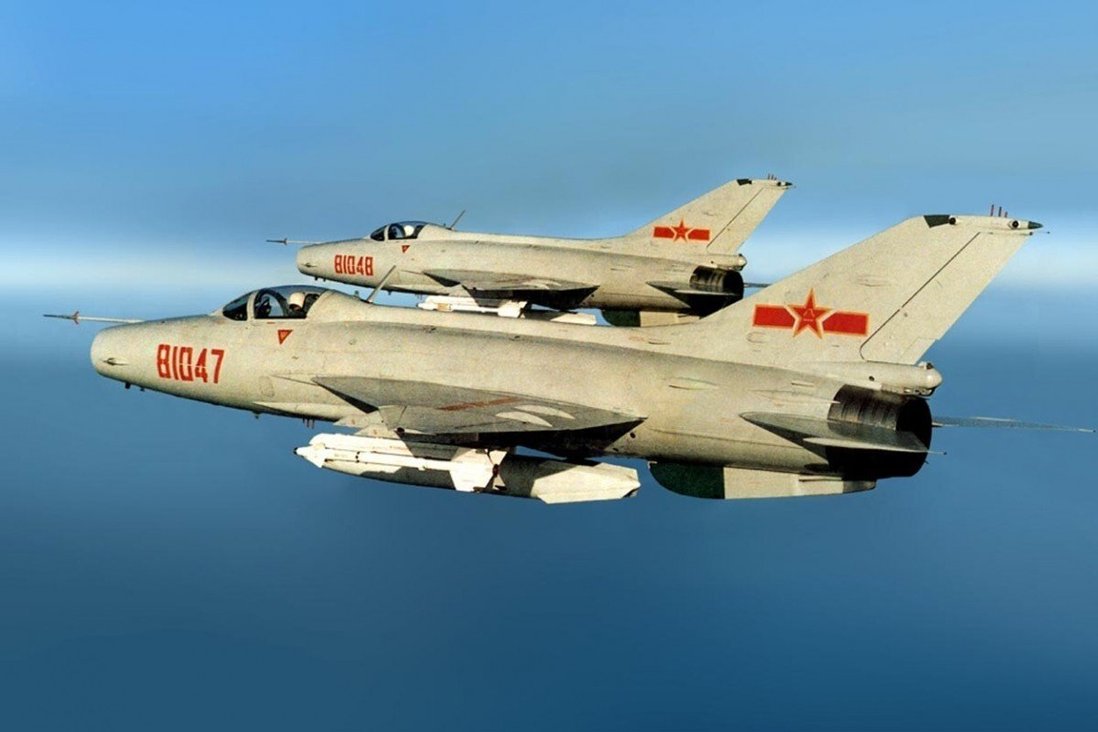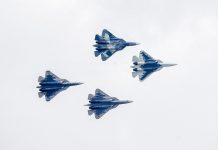China has been sending “grandpa era” Chengdu J-7 fighter jets apart from other combat aircraft to intimidate Taiwan, leaving military experts perplexed.
There have been more than 170 Chinese incursions into Taiwan’s airspace since the island nation began to track and publish these military drills in September 2020.
In June alone, Chinese airplanes violated Taiwan’s Air Defense Identification Zone (ADIZ) 10 times. The largest one was on June 15 when 28 PLA aircraft entered the island’s airspace. Since then, the number of incursions has grown in quantity and intensity as there have been seven incursions in July already.
India’s Latest Agni-P Ballistic Missile Sparks A Fierce Debate Between Chinese & Indian Experts
On June 17, four J-7 fighters, which Taiwan calls “grandfather fighter jets”, entered its airspace along with a J-16 multi-role fighter and a Y-8 electronic fighter. The Chinese sending these Cold War-era jets has perplexed the experts given the communist nation has more advanced aircraft.
According to Taiwan’s Ministry of National Defense, Chinese jets have entered the self-ruled island’s ADIZ more than 170 times since September last year.

The Chengdu J-7
The Cold War era’s second-generation fighter, the J-7 (NATO name Fishcan), made its maiden flight in 1966. A license-built version of the Soviet MiG-21, it was developed by Chengdu Aerospace Corporation.
With a ceiling of more than 20,000 meters and a top speed of Mach two, the J-7 remained China’s most high-reaching and fastest aircraft until the end of the Cold War. It performed the role of absolute aerial superiority.
Why Chinese Stealth Fighter Jets Have ‘No Buyers’ In Sight Unlike The US’ F-35 & Russian Su-57 Jets?
During the course of 48 years in production, the J-7 was developed into more than a dozen variants. After upgrading the technology of original versions into J-7PG and J-7BG series for Pakistani and Bangladeshi air forces, Chengdu developed trainer variants of the jet for domestic Chinese uses, supplied to both PLA Air Force and PLA Naval Air Force.
The company ceased production in 2013 after the delivery of the last 16 F-7BGI to Bangladesh. Some estimates suggest that more than 2,400 models of the aircraft were manufactured.
From Taiwan Strait To Indian Border, China Using Its Stealth J-20 ‘Mighty Dragons’ As Scare Tactics
The Chengdu J-7 remains China’s most exported jet with a presence in more than 17 countries including four Indian neighbors — Bangladesh, Pakistan, Sri Lanka, and Myanmar.
Drones or Real J-7s?
Military experts have given multiple explanations over China sending J-7s as part of “island encirclement exercise”.
Some military sources highlighted the possibility that the J-7 planes sent to Taiwan were unmanned and converted into drones but Taiwan’s air force said they were indeed J-7s and not drones.
Reports suggest that China has turned thousands of decommissioned J-7s into unmanned aerial vehicles (UAVs), including other jets like Q-5, J-6, and J-8. Some of them were on display at the China International Aviation & Aerospace Exhibition 2018.
Indian Army Pushes Govt On ‘Urgent’ Acquisition Of Russian Ka-226 Helicopters
“The PLA would do well to take a page from the Azerbaijani playbook and similarly use the J-7 as an unmanned decoy for SEAD [suppression of enemy air defense] during a regional emergency,” said Ben Ho, an air force analyst at the S Rajaratnam School of International Studies, Singapore.
He was referring to the Nagorno-Karabakh conflict in which Azerbaijan pulled off a military victory using targeting drone attacks on rival Armenia.
Another set of experts believes that the unmanned J-7s were supposed to test the Taiwan Air Force’s response to see if all of their planes were flying again.
One PLA Y-8 ASW entered #Taiwan’s southwest ADIZ in the afternoon of July. 12, 2021. Please check our official website for more information: https://t.co/VQuG76Ncjl pic.twitter.com/7f518IB9c4
— 國防部 Ministry of National Defense, R.O.C. ?? (@MoNDefense) July 12, 2021
Meanwhile, Chinese experts claim that the drill (which included J-7s) showed the PLA’s high level of combat preparedness and control over the region, as its less advanced aircraft can also play a role, state-run Global Times reported.
“They can be equipped with advanced air-to-air missiles and mission pods to become competitive even today, and they could also be modified into unmanned versions,” said Song Zhongping, a Chinese mainland military expert.
Will China Replace the J-7 Fleet?
According to a report by Global Times, the PLA Air Force is looking to gradually decommission its fleet of J-7 fighter jets and replace them with more advanced, next-generation ones.

The brigade of J-7s in the PLA’s Western Theater Command Air Force held its “curtain call performance” in March this year.
Why China’s Military-Linked Firm Is Storing Genetic Data Of Tibetan And Uyghur Women?
“China ran a lot of modifications and upgrades on the J-7, gaining experiences in the process, and eventually developed variations like the JL-9 trainer jet,” Wei Dongxu, a Beijing-based military expert, told the Global Times on Sunday.
In the backdrop of China’s declaration to increase its defense budget by 6.8% in 2021, the aging fleet of J-7 is likely to get replaced by third-generation fighter jets including the J-10, J-11, and J-16 and the fourth-generation fighter jet the J-20, which is the latest entry to the country’s powerful air force.
Read More




